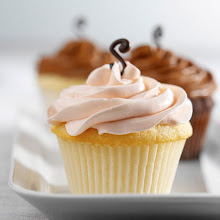how I'm going to do these experiments -(method) :
idea number 1: the affect of temperature on the elasticity of a rubber band
1. gather 24 rubber bands(12 thick, 12 thin), separating them evenly into 4 groups.(ie 3 thick and 3 thin in each group)
2. leave one group in the freezer, another in the fridge, another at room temperature and the last under a lamp. set them aside for 3 days
3. line up a hanging hook next to a 30cm ruler then collect one group of rubber bands
4. sit one of them on the hanging hook
5. hang a 100g weight at the end of the rubber band and measure the distance between the beginning and end of the rubber band
6. record the results in a table (remembering to draw up a 'thick' and 'thin' column)
7. repeat steps 4-6 for the other 5 rubber bands
8. repeat steps 4-7 for the other groups
idea number 2: does temperature affect density
1. collect the materials- different liquids of different densities (oil, water, dish-washing liquid) and 4 containers
2. pour in 50mls of each liquid into one container (ie. 50mls of oil, water and dish-washing liquid will be together in the one container)
3. complete step 2 another 3 times (should end up with 4 lots of mixed liquids)
4. swirl the liquids with the end of a pair of chopsticks and add a ball (don't know the name or how to describe the ball- sorry)
5. place one of these containers under a lamp, another at room temperature , another in the fridge and the last in the freezer
6. leave the containers undisturbed for 3 days
7. observe and record the results in a table- what are the layers of the liquid? what layer is the ball sitting in?
8. repeat steps
idea number 3: what type of acid has the most effect on egg shells
1. collect a dozen eggs (uncooked) and three lots of 200mls of vinegar,orange juice, lemon juice and cocoa cola
2. pour one 'lot' of liquids into the containers and gently place the eggs (4) inside
3. leave the eggs in the containers for 3 days
4. observe the egg- how transparent is the shell? how soft/hard is it? is it rubbery? etc
5. record the results in a table
6. rinse the containers before starting a new trail
7. repeat steps 2-6 for the next 2 trials
idea number 4: what type of solution best protects egg shells from acids
1. collect a dozen eggs (uncooked), 200mls of coke, lemonade and fanta, containers (8) and three lots of 200mls of Listerine, toothpaste and water in ratio 1:5 , salted water in ratio 2:5 and tap water
2. take a picture of the first 4 eggs(for colour reference- at the end)- note remember which egg is which
3. fill up 4 containers of one 'lot' of solvents (Listerine, toothpaste compound, salt water and tap water)
4. soak the eggs (4) in the solvents for 2 days
5. pick up the eggs slowly, placing them on a stand to dry. note: do not wipe them dry
6. place the eggs in separate containers of coke and leave aside for 1 day
7. pick up the eggs and, with a towel,lightly dry them.
7. observe the eggs- what is the colour difference compared to the matching photo taken in step 2
8. record the results in a table
9. repeat steps 2-8 for the rest of the eggs,this time placing them in lemonade and fanta instead of coke
idea number 5: what solvents will remove permanent marker ink best
1. collect all the materials- plastic, permanent marker pens (3), ruler, solvents (4)- water, vinegar, alcohol, and dish washing detergent and containers
2. draw a 2cm by 2cm square on the piece of plastic with one of the 3 brands of marker pens
3. pour the liquids into the separate containers
4. sink the plastic into the solvents and leave for a week undisturbed
5. pick it out off the containers slowly and rinse under water
6. record results (area of permanent marker left) in a table and take pictures
7. rinse containers before starting a different brand of permanent marker
8. repeat steps 2-7 for the other permanent marker brands
note: because i do not know how long we have to complete this experiment, the time may be adjusted/changed so that i can complete it in time
these methods may sound confusing now, but if you really think about it.. it's..not
Subscribe to:
Post Comments (Atom)


No comments:
Post a Comment